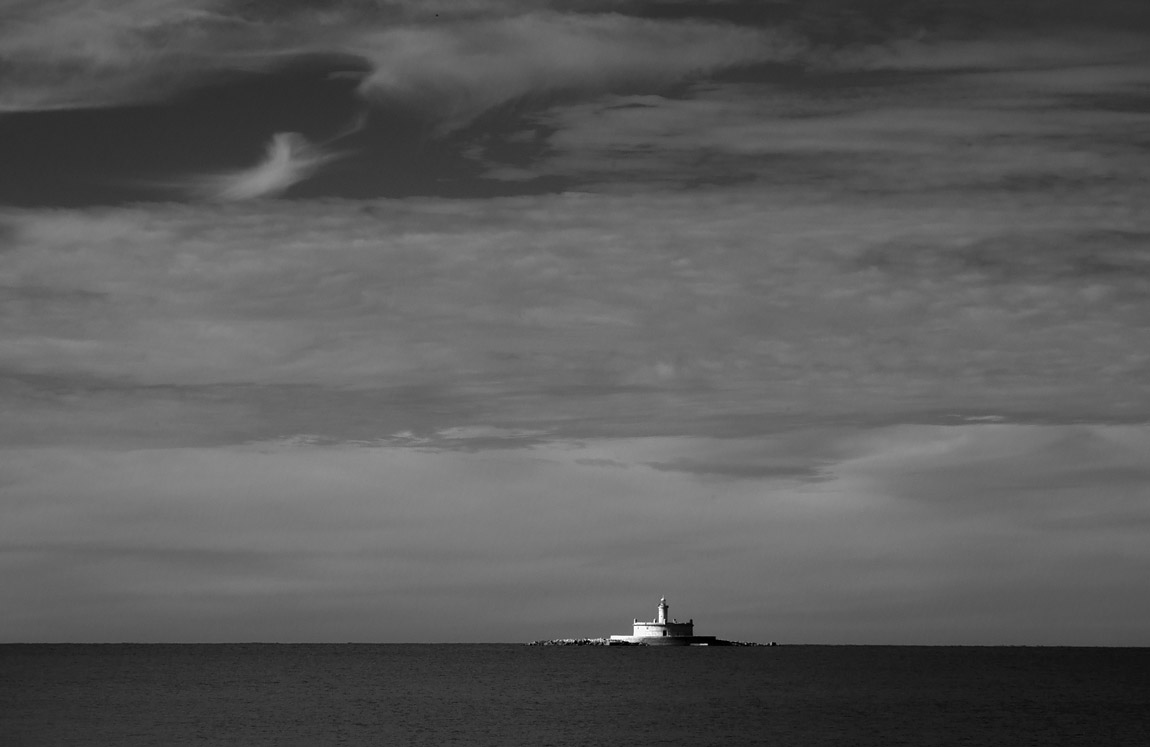The Bugio fortress, at the entrance of the Tagus River estuary near Lisbon, was built during the 17th century. It constituted a point of utmost importance in Lisbon’s defence during the War of Restoration, which opposed Portugal against Castile between 1640 and 1668. In 1775, to help navigation, a lighthouse was installed inside the fortress, which has undergone constant improvements and repairs until the present. It began by being powered by olive oil, then by petroleum, gas, and finally, in 1959, by electricity. In 1981, it began to be remotely controlled, and there was no longer a permanent lighthouse keeper.
Anyone who sees them from a distance cannot help but be impressed by the uniqueness of the fortress and the lighthouse, which seem tiny in the middle of the ocean despite being 14 meters tall. That was the impression I felt a few days ago when, on a beautiful sunny winter day, I saw them from Cova do Vapor on the south bank of the Tagus. The use of monochromatic infrared photography that converts the blues of the sea and of the sky into deep greys intensified the beauty and drama of the scenario.


